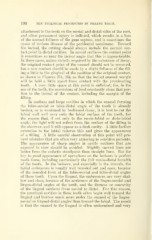Page 428 - My FlipBook
P. 428
190 THE TECHNICAl, PROCEDTJEES IN FILLING TEETH.
attacliment to the tooth on the mesial and distal sides of the root,
and often jDermanent injury is inflicted, which results in a loss
of the normal fullness of the gum septmn, and is sometimes the
cause of serious disease of the peridental memhrane. Toward
the incisal, the cutting should always include the normal con-
tact point in distal cavities. In mesial surfaces the contact point
is sometimes so near the incisal angle that this is impracticable.
In these cases, unless strictly required by the extension of decay,
the original contact point of the enamel should not be removed,
but a new contact should be made by a slight fullness of the fill-
ing a little to the gingival of the position of the original contact,
as shown in Figures 254, 264, so that the incisal enamel margin
will be held a little apart from contact with the proximating
tooth. A very little space at this point is sufScient, for, in the
use of the teeth, the excursions of food constantly clean that por-
tion to the incisal of the contact, including the margin of the
filling.
In medium and large cavities in which the enamel forming
the labio-mesial or labio-distal angle of the tooth is already
broken, or is weakened by backward decay, it is best to cut the
labial wall well over onto the labial surface of the tooth, for
the reason that, if cut only to the mesio-labial or disto-labial
angle, the light will not reflect from the surface of the filling to
the observer, and it will appear as a dark cavity. A little farther
extension to the labial relieves this and gives the appearance
of a filling. A little careful observation of this point will pre-
vent mistakes that are often very annoying to sensitive patients.
The appearance of sharp angles in cavity outlines that are
exposed to view should be avoided. Slightly curved lines are
better from the esthetic standpoint than straight lines. But the
key to good appearance of operations on the incisors is perfect
tooth form, including particularly the full mesio-distal breadth
of the tooth. In the incisors, and especially in the laterals, the
labial embrasure is usually well rounded out and open, because
of the rounded form of the labio-mesial and labio-distal angles
of these teeth. Upon the lingual, the embrasures are very shal-
low and close, because of the acuteness of the linguo-mesial and
linguo-distal angles of the teeth, and the flatness or concavity
of the lingual surfaces from mesial to distal. For this reason,
the proximal cavities in these teeth often begin well toward the
lingual and burrow much more under the enamel of the linguo-
mesial or lingual-distal angles than toward the labial. The result
is that the enamel to the lingual is often undermined and very


